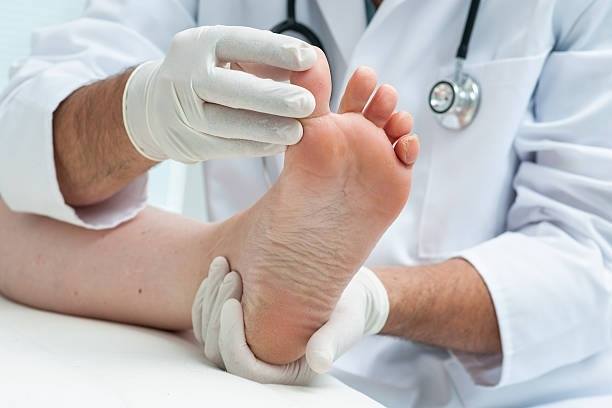The Fascinating Functions of Foot Bones in Balance and Mobility
As we go about our daily lives, we often take for granted the complex movements and actions that our feet perform. However, when it comes to balance and mobility, foot bones play an essential role in keeping us steady on our feet. From walking and running to jumping and dancing, these small yet intricate structures provide a strong foundation for our body’s movement. In this blog post, we will dive deep into the fascinating world of foot bones – exploring their functions, importance in balance and mobility, and how proper care can affect our overall well-being. So put on your comfy shoes as we embark on a journey to discover the incredible capabilities of foot bones!
A brief overview of the foot bone structure and its functions
To understand the role foot bones play in balance and mobility, let’s first familiarize ourselves with their structure. The foot is made up of 26 bones, which are divided into three main parts – the hindfoot, midfoot, and forefoot. Each bone has a unique shape and size that contributes to its specific function.
The hindfoot consists of two large bones – the talus and calcaneus – that form the ankle joint. This part of the foot is responsible for supporting the body’s weight and connecting it to the leg. Meanwhile, the midfoot consists of five elongated bones called metatarsals, which provide stability and balance when walking or standing. Lastly, the forefoot contains 14 smaller bones known as phalanges, which make up the toes and help with propulsion and balance.
Now that we have a basic understanding of foot bone structure let’s delve into their specific functions in balance and mobility.

Foot Bones Role in Body’s Balance
The role of foot bones in maintaining balance
Our feet act as our body’s foundation when standing or walking, making it crucial for them to have good balance. Feet bones play a significant role in this by providing stability and support. The arches of the feet, formed by the bones and ligaments, act as shock absorbers and help distribute weight evenly across the foot. This allows us to maintain a steady center of gravity even on uneven surfaces.
Moreover, the hindfoot bones are responsible for side-to-side movement and rotation, which is crucial for balance when walking or standing. The midfoot bones also play a role in balance by providing a stable base for the foot to pivot on during movements.
Impact of foot bone structure on mobility
The human foot is a complex and intricate structure that allows us to walk, run, and jump. However, the bone structure of our feet has a significant impact on our mobility. The arches are one of the most essential aspects of the foot bone structure as they enable the foot to absorb shock and distribute weight. Flat feet, for instance, lack arches and can cause unstable footing leading to chronic pain and injuries. In contrast, high arches can lead to foot and ankle instability and a higher risk of stress fractures. Foot bone structure also affects our gait cycle, with subtle changes possible in the mechanics of our movements. For instance, individuals with longer toes have a longer lever arm in their foot, which can increase the force in their ankle joint, leading to more significant ankle injuries. Understanding how our foot bone structure affects our mobility is vital to maintaining a healthy and active lifestyle.
Surprising facts about foot bones
While we may be familiar with the functions of our foot bones in balance and mobility, there are some surprising facts about them that many people may not know.
- The foot has more bones than any other part of the body, accounting for 25% of our total bones.
- Babies are born with cartilage instead of bone in their feet, which gradually ossified3. The smallest bone in the body is located in the middle ear – called the Stapes – but it plays (hardens) over time. This is why babies’ feet are so soft and flexible.
- The smallest bone in the body is located in the middle ear – called the Stapes – but it plays a crucial role in our hearing.
- Foot bones continue to grow until we reach our late teens or early twenties, which is why children’s feet can appear larger than their bodies.
- Our foot bones are connected to our facial muscles, which is why we sometimes involuntarily curl our toes when experiencing strong emotions.
By taking care of our feet and being mindful of how they support us, we can appreciate the amazing capabilities of foot bones even more. So next time you take a step, remember to thank your footbones for keeping you balanced and mobile!

Anatomy of Foot Bones
Taking care of our foot bones
Our foot bones are essential for our daily routines and physical activities. Did you know that the human foot is made up of 26 bones and over 100 muscles, tendons, and ligaments? Taking care of our foot bones is crucial to maintaining overall health and mobility. Neglecting foot health can lead to foot deformities, chronic pain, and even affect our posture. Simple daily habits such as wearing comfortable shoes, stretching before physical activity, and maintaining good hygiene can prevent foot injuries and ensure the longevity of our foot bones. Getting regular foot massages and maintaining a balanced diet also contribute to healthy bones and strong muscles in our feet. It’s time to give our feet the attention they deserve and take responsibility for our overall health. Let’s make sure we take care of our foot bones and continue to explore the world with comfortable and healthy feet!
Maintaining healthy foot bones for better balance and mobility
Maintaining healthy foot bones is essential to achieve better balance and mobility, especially as we age. Our feet bear the weight of our whole body, and any damage to the bones, ligaments, or tendons of our feet can contribute to a variety of musculoskeletal problems, including joint pain, arthritis, and fractures. To maintain healthy feet, it is crucial to engage in weight-bearing exercises, such as walking and running, to help build bone density and improve balance. Additionally, a healthy diet that includes nutrient-rich foods like calcium, vitamin D, and magnesium can contribute to stronger bones and prevent osteoporosis. It is also essential to ensure that footwear provides adequate support, cushioning, and comfort to avoid foot injuries. Finally, regular foot care, such as trimming nails, cleaning feet, and checking for abnormalities, can help detect foot problems early, preventing them from escalating into more serious conditions. By adopting these healthy habits, we can help prevent potential foot problems and promote better balance and mobility for a healthy and active lifestyle.

Foot Treatment and Care
Tips for strengthening foot bones through exercise and proper footwear choices
As one of the most important parts of our body, our feet play a pivotal role in supporting our overall well-being. However, as we age, our bones become fragile, and this can lead to discomfort, pain, and even chronic conditions, such as osteoporosis. Therefore, it’s crucial to maintain healthy and robust bones in our feet through exercise and proper footwear choices. Firstly, regular weight-bearing exercises, such as walking, running, and hiking, can significantly increase bone density, reduce the risk of fractures, and strengthen our arches and toes. Secondly, choosing shoes with good arch support, cushioning, and ventilation can protect our feet from injuries, improve our balance, and absorb shock when we walk or run. Lastly, incorporating calcium-rich foods, such as dairy products, dark leafy greens, and fish, can aid in strengthening our bones and preventing foot-related discomforts. By following these tips, we can effortlessly protect and strengthen our feet and enjoy a balanced and healthy lifestyle.
In conclusion, our foot bones play a crucial role in supporting our daily activities, and understanding their structure and functions can help us maintain healthy and active lives. By taking care of our feet through proper exercise, footwear choices, and nutrition, we can prevent potential foot problems and promote better balance and mobility. Let’s appreciate the wonder of our footbones and make sure to give them the love and care they deserve! So, next time you lace up your shoes, remember to thank your footbones for their incredible support and strength. Happy feet, happy life!
Flagstaff Foot Doctors: Anthony Rosales DPM
https://www.google.com/maps?cid=8835841318590452161
421 N Humphreys St, Flagstaff, AZ 86001, United States
(928) 774-4825
https://flagstafffootandankle.com/
